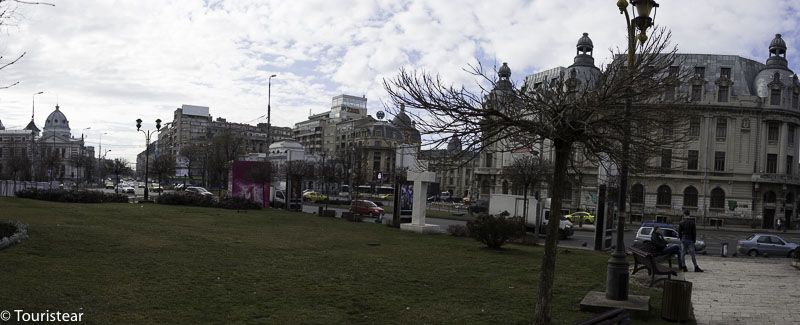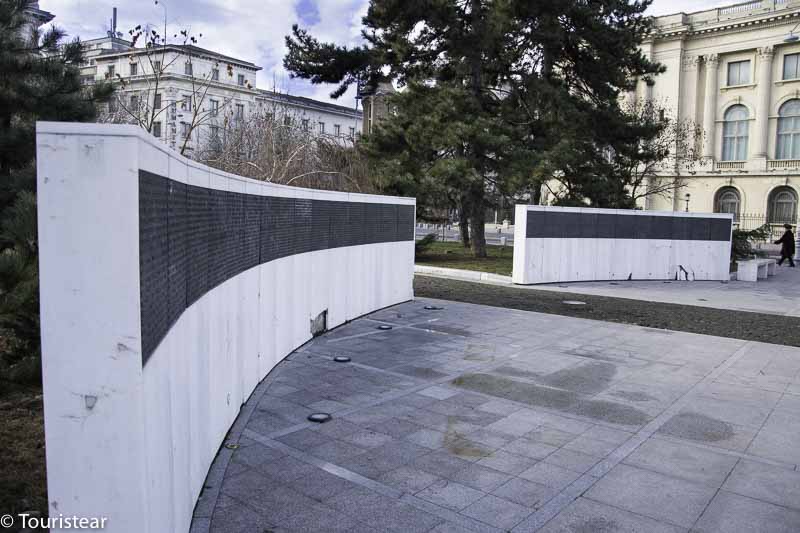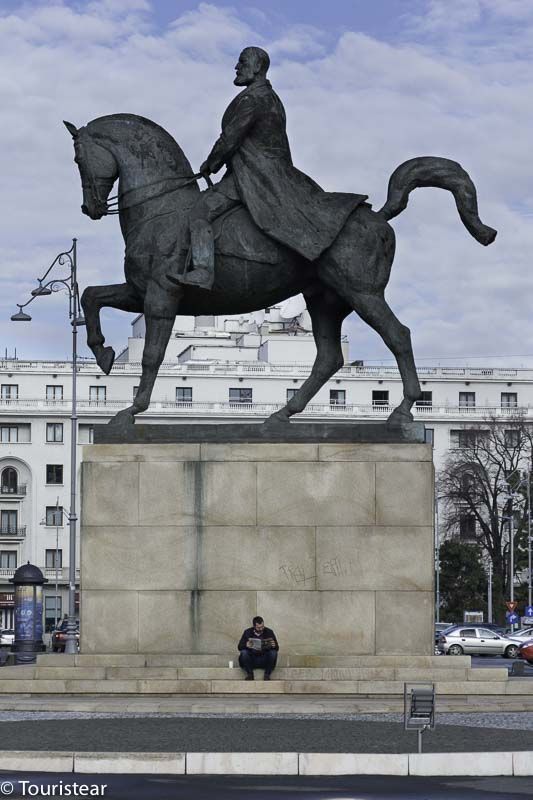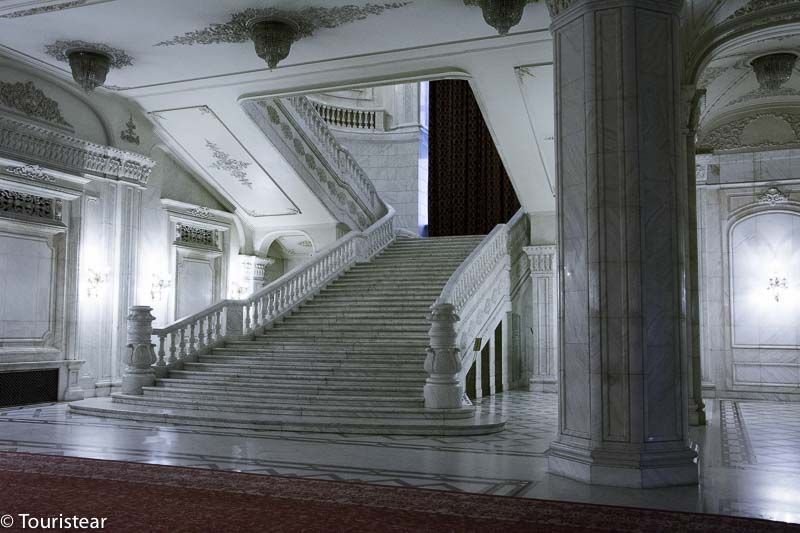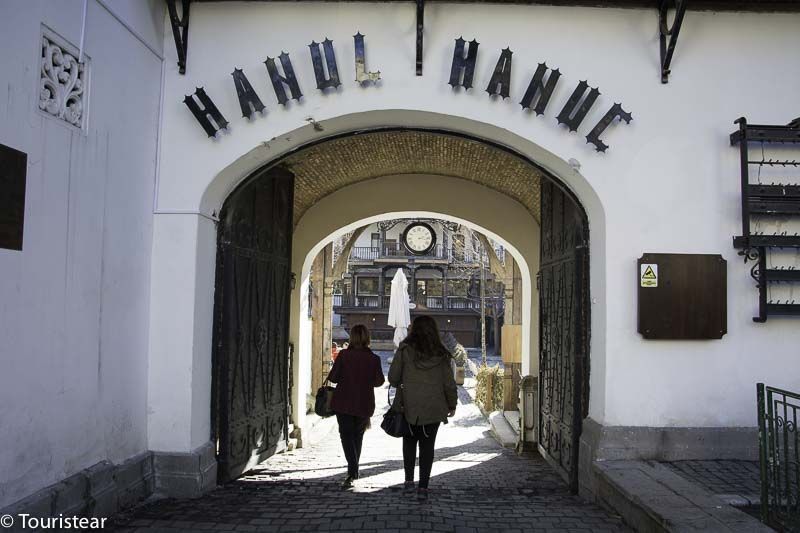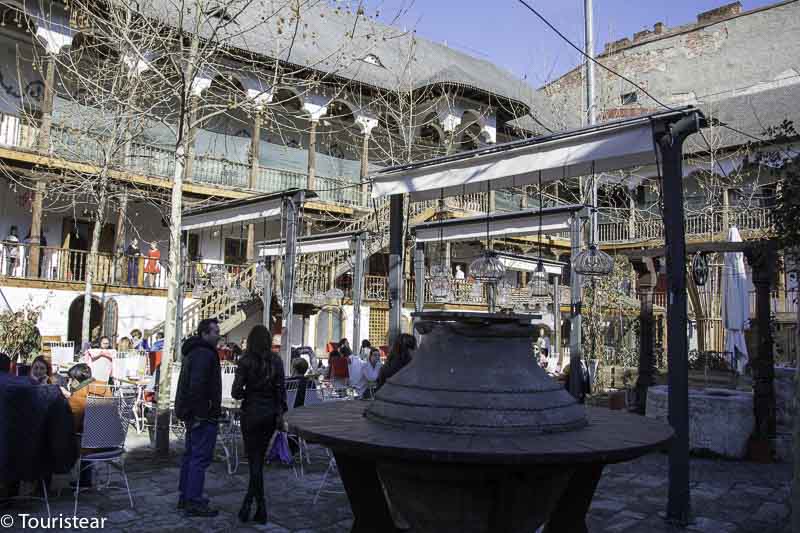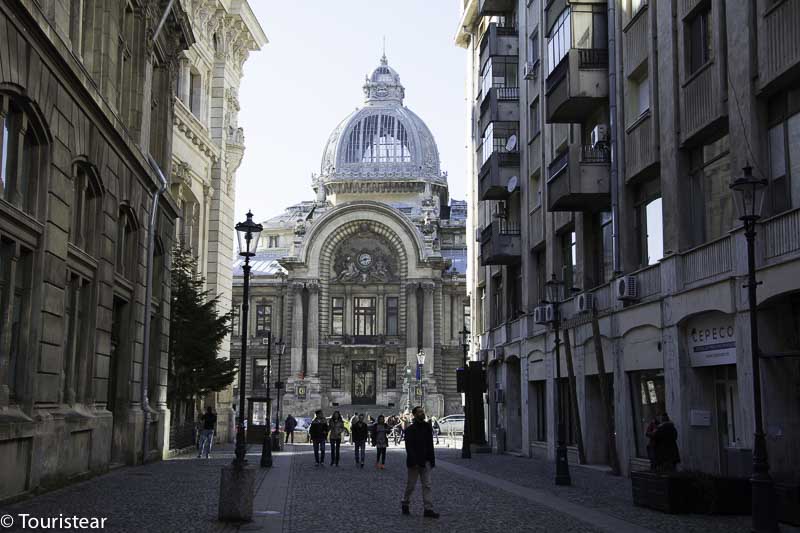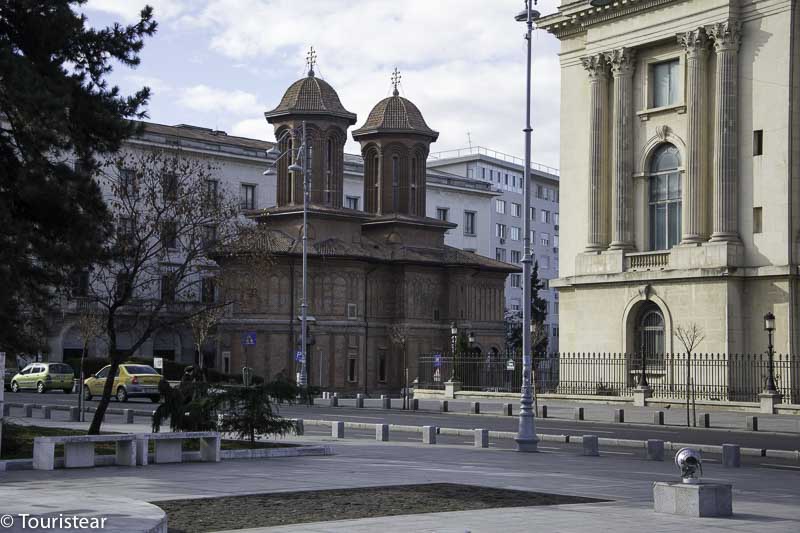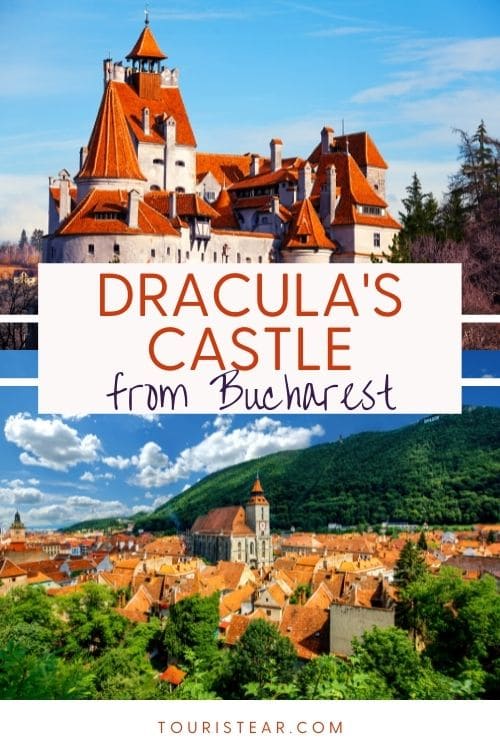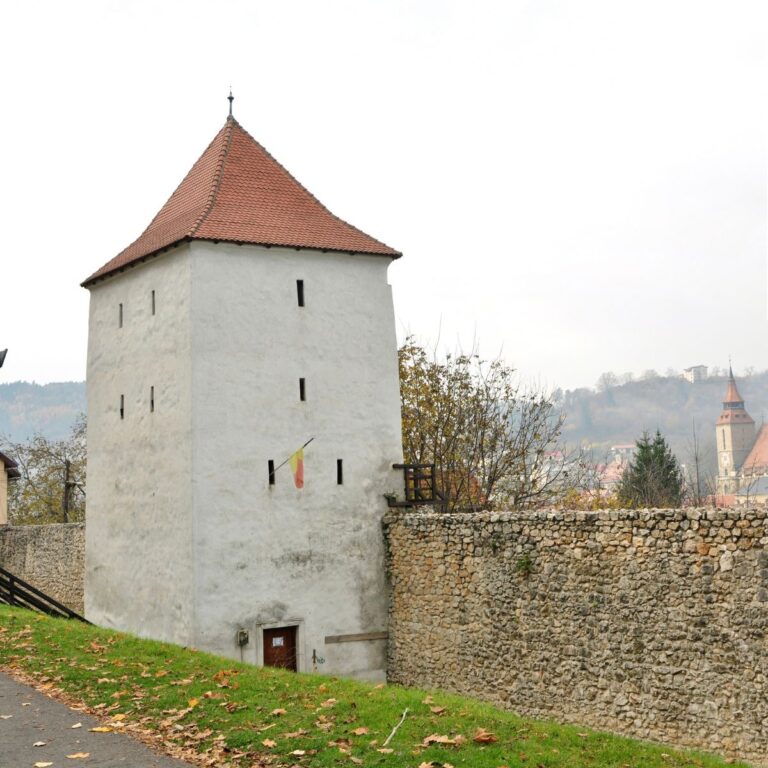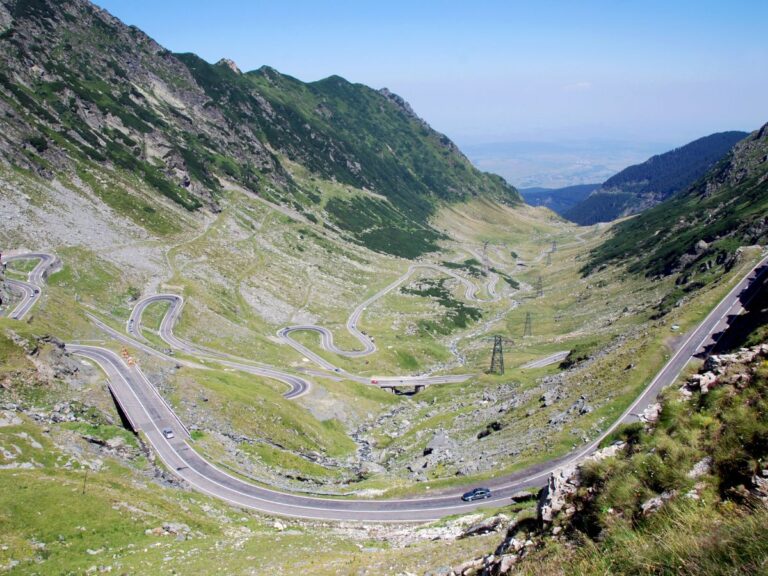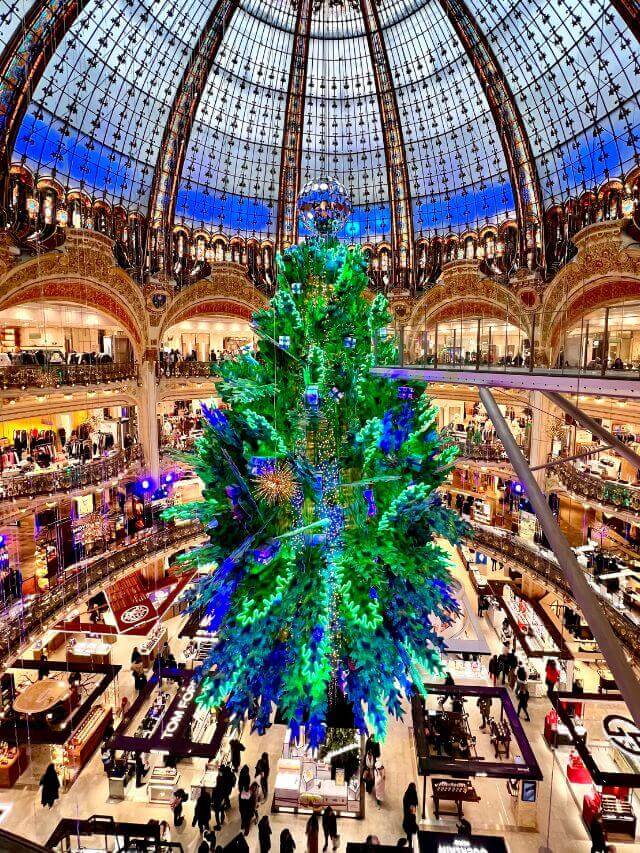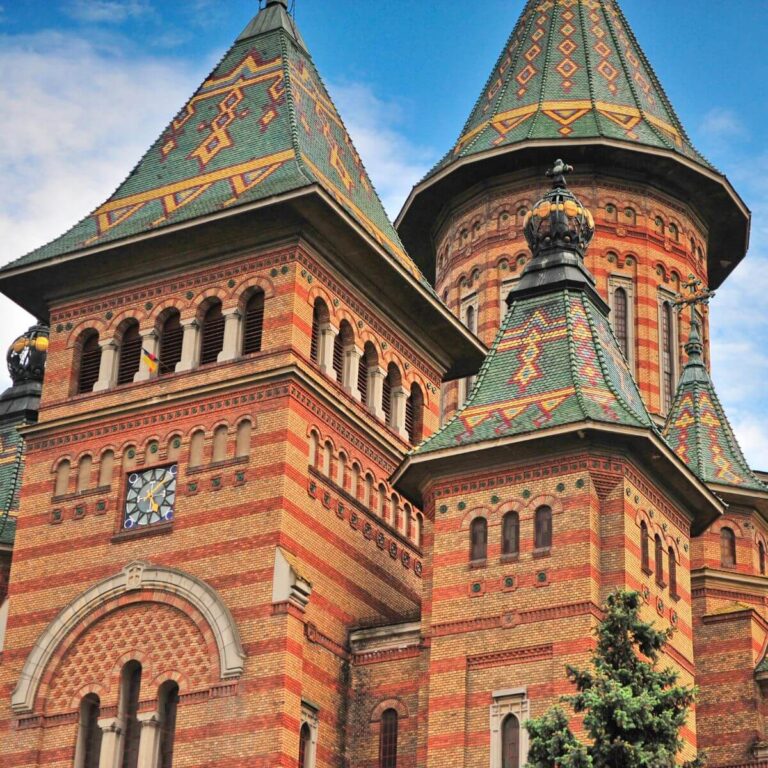Best Things to Do in Bucharest
Bucharest is a city you have to visit at least once. For many reasons, not just because it is a beautiful city, which it is. Neither because it is a city proud of its culture and its history, that too.
But because it is a city that teaches you how to preserve the values and essence of oneself despite the difficulties, Bucharest teaches you from the first moment you step on it when you leave Bucharest Airport.
Are you seeking information on a route from Bucharest to Dracula’s Castle? Then, please take a look at our itinerary across the castles of Romania.
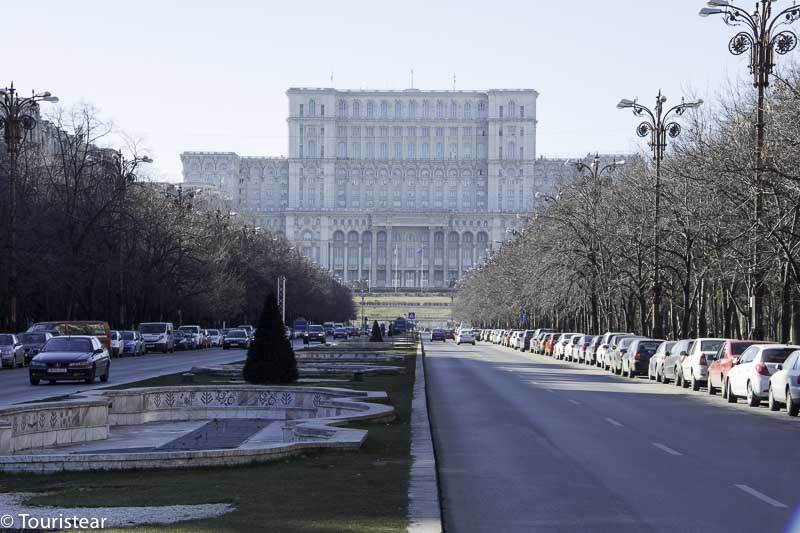
Must-Visit Places in Bucharest in 1 or 2 days
București, as they call it, is a city that cannot help showing you what it has been, what it is, and what it wants to be with stark sincerity.
“I was big, beautiful, and important; they called me the Paris of the East,”
it tells you when you walk through the main and wide avenues of Bucharest and see the palaces and mansions that the bourgeoisie and noble families of all of Europe had in the mid-nineteenth century and early twentieth century.
“I suffered an iron communist dictatorship,” he tells you when you see the parliament building, “The People’s house” that Ceaucescu built, or the communist housing blocks that seem to have been made with mold, all the same.
I invite you and encourage you to get to know Bucharest by the hand of the guide who taught it to us, Dana, a citizen of Bucharest and a wide connoisseur of this city and its history, and who speaks perfect English, by the way.
- Bucharest Free Tour with an English-speaking guide.
The University Square and the crosses
University Square is one of the most critical places in the history of Bucharest. They call it the university square, but in reality, it is not a square; it is a crossroads.
At this junction is the University of Bucharest, and right in front of it, on the other side of the street, there is a kind of square or space; this is the University Square.
In it, you will see four statues honoring four personalities from Romania’s world of culture and education.
- They are Michael the Brave, the first king to have under his mandate the three provinces, Wallachia, Transylvania, and Moldavia,
- Ion Heliade Rădulescu, founder of the Romanian Academy and advocate of discontinuing teaching in Greek,
- Gheorghe Lazăr was the first teacher to teach in Romanian and not in Greek
- and Spiru Haret, the most influential mathematician in the history of Romania and Minister of Education.
A lot happened in this square during the turbulent moments of the Romanian revolution.
Ceausescu crushed (literally) the revolutionaries with the tanks, and the crosses were placed in the memory of these and, by extension, of the rest of the dead during the revolution.
They are not in the square of the four statues but on one of the islets at the intersection of avenues.
The Crosses of the University square remember those who died during the Romanian revolution.
The Clown Car and the National Theater
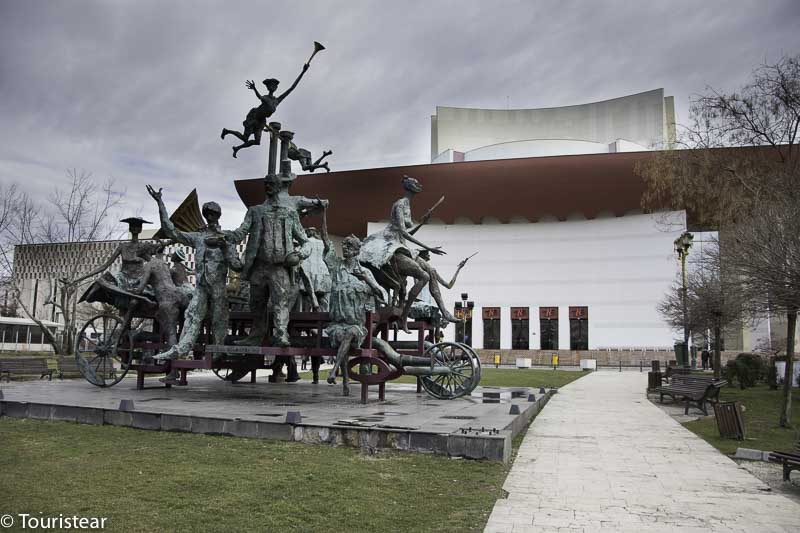
In front of the crosses, there is the National Theater and the clowns’ car. The National Theater was built in the 19th century, and in front of its doors is the Clowns’ car, which is a cast-iron sculpture in honor of the actors and the profession.
You take the boulevard de la Reina Isabel (boulevardul Regina Elisabeta), bordering the university until you reach Victoria Street (Calea Victoriei). Then, you go up Victoria street to the right towards Revolution Square.
Victoria Avenue
Victoria Avenue in Bucharest (Calea Victoriei) is one of the main attractions and one of the Romanian capital’s most historic boulevards.
It is also the perfect place to stroll in the morning, afternoon, or evening, especially on days when pedestrians are free to walk and there are no cars in the area.
Victoria Street is one of the most important streets in Bucharest, full of luxury shops, hotels, and cafes. It was one of the streets that earned it the nickname of “little Paris.”
Bucharest Revolution Square
Here is the balcony from where Ceausescu delivered his last speech. It all started in Timisoara with a priest who expressed his anti-regime views openly.
The government decided to “separate” the priest and kick him out of his home. They began a series of protests in defense of the priest that grew more and more, ending with the disturbances in Timisoara.
Ceausescu was in Iran at the time. He returned quickly as the situation became more and more complicated.
When the situation was already critical and to make public a show of force, he organized a rally in front of the headquarters of the communist party, which today is the Plaza de la Revolución.
He began the speech, and after 5 minutes, he was interrupted, and although he could finish his speech, the situation had no turning back.
In the act of unforgivable desperation, he launched the army against his own people, but the military did not accept and sided with the people.
The next day they fled by helicopter, but they did not get very far and were captured, tried, and found guilty of genocide, and executed.
The revolutionaries cut from the flags of Romania the socialist shield that was in the center of the flag, in the yellow band. This flag became the symbol of the Romanian revolution.
In the square, there is a memorial to those who fell during the Romanian revolution of 1989 and also the equestrian statue of Carol I.
Romanian Athenaeum
The Romanian Athenaeum is the opera of Bucharest. It was built in 1888, and the money for its construction was raised through a public collection whose motto was “Donate a penny for the Athenaeum,” and they succeeded, well, they did.
For the inhabitants of Bucharest, this building symbolizes the greatness and splendor that the city once had, earning it its nickname, “Little Paris.”
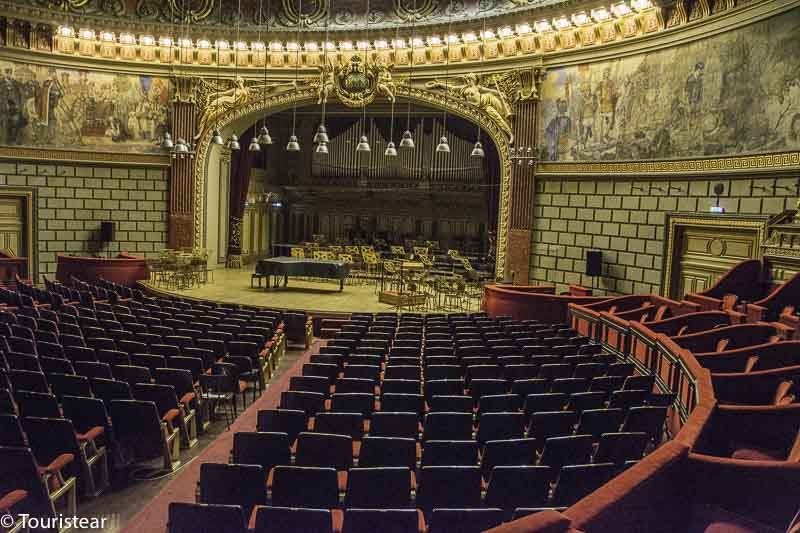
On the outside, it is beautiful, but the exciting thing is visiting its interior, with its spiral staircases or auditorium wholly decorated with frescoes. It is gorgeous.
We go down the entire Victoria Street to visit the Parliament at a fixed time, eleven-thirty, and then we will return to see the old town.
Parliament, The House of the People
The Parliament of Bucharest is Ceausescu’s pharaonic work and whose premiere he could not enjoy.
It is 330,000 square meters and is the second-largest administrative building in the world after the Pentagon.
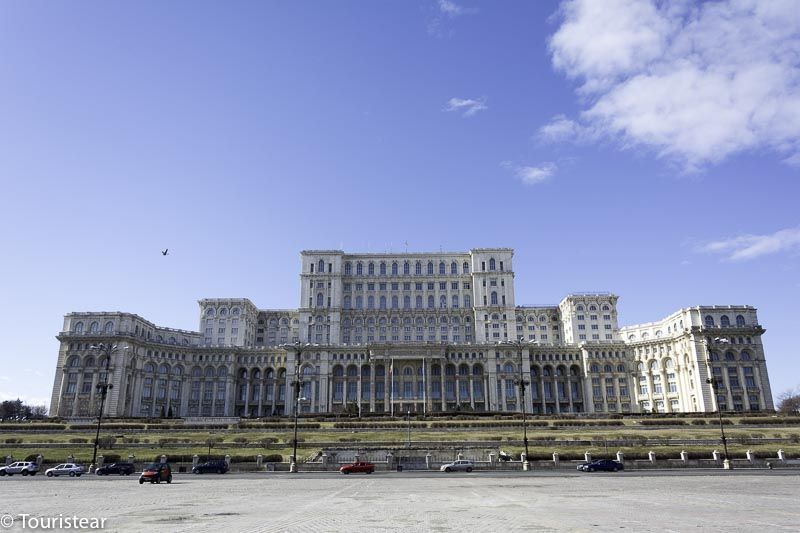
We went into the visitor center offices for the corresponding guided tour, which lasted about two hours, from 11:30 to 13:30.
If you want to take photos, you pay for two tickets, the first, your access and the second, the camera ticket. Otherwise, you don’t take pictures.
They take it very seriously, honestly. Taking photos is strictly prohibited in the entrance offices.
I was waiting for the rest of the tourists on the visit to come in, and they thought I had taken a photo.
I had to show him all the photos from my camera to show him that it was not like that. He sat me down with a burnt horn as if we were still in a communist regime. This is the only one that I put to all my experience in Bucharest and Romania.
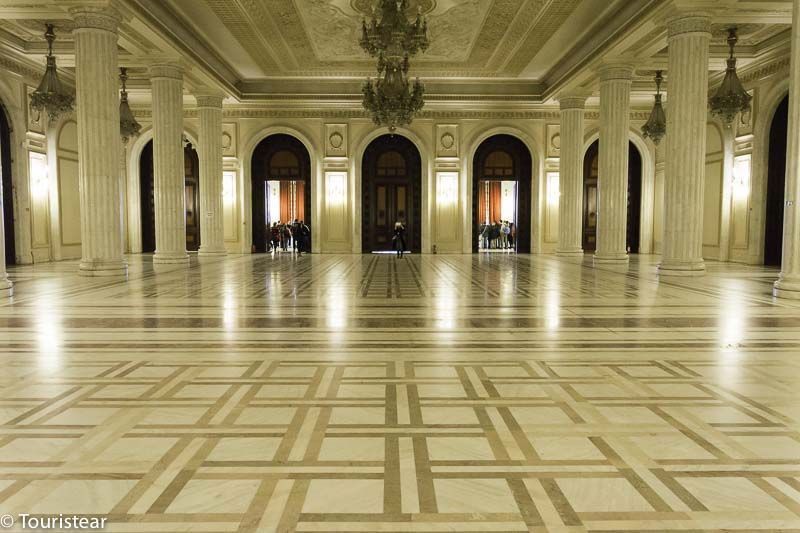
Once the visit begins, the official guide tells us all the important monuments.
“It has more than 1000 rooms, 2800 chandeliers and to build it more than 1,000,000 square meters of marble and 1,000 tons of basalt, 900,000 square meters of wood were used …”.
While listening to all these great numbers, I could not think that Ceausescu was building this monster while his people were starving.
It is beautiful inside, I will not deny it, gigantic marble rooms, with columns and without them, with beautiful stairs, with curtains that are so big that each curtain weighs 500 kg.
They have to take it down to clean it with a crane, with massive chandeliers were to change the bulbs you have to put inside them through the ceiling.
But I keep wondering if it was really necessary at the time. Judge for yourself with the photos that I leave you.
National History Museum & Its Treasures
This was where we learned that the Romanian people come from the Dacian people and that the ancient province of Dacia was what Romania and Moldova are today.
It was a rugged town to conquer, and when the emperor Trajan finally conquered the Dacian people in the year 107, he raised the famous Trajan’s Column in Rome to tell the Roman people how the deed had been carried out.
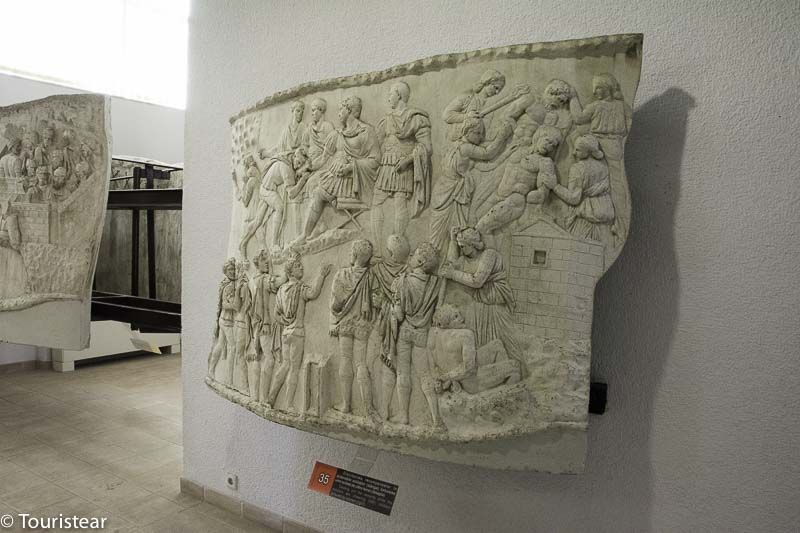
When we were in Rome, of course, we visited Trajan’s column, which is very close to Piazza Venezia, but, indeed, you can only really enjoy the metopes at the bottom and not those at the top.
Well, the Bucharest history museum has a life-size reproduction of every one of the metopes of Trajan’s Column, but instead of having them mounted like a column, they have them all on display, so you can enjoy them with eye level.
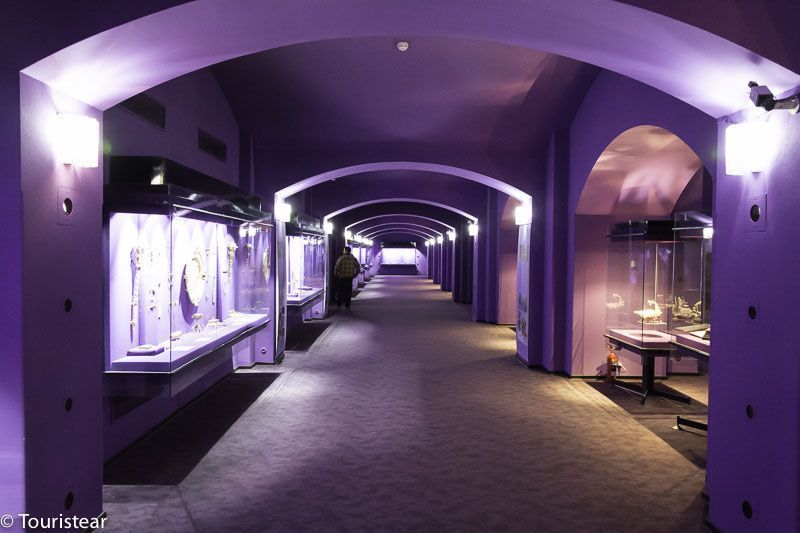
On the lower floor, we visited the treasures found in the different archaeological excavations in Romania and the royal jewels. The brood with the golden chickens stands out from the 4th century.
The Ruins of Vlad Tepes Castle in Bucharest
It is a good starting point to begin visiting the old town. Across from Union Square (Parcul Unirii) is the old town of Bucharest.
On Strada, Franceză is the Palatul Voievodal Curtea Veche, or in Christian, the Palace of the Principality and Old Court.
Another thing we learned is that the founder of Bucharest was Vlad Tepes, and this was his palace.
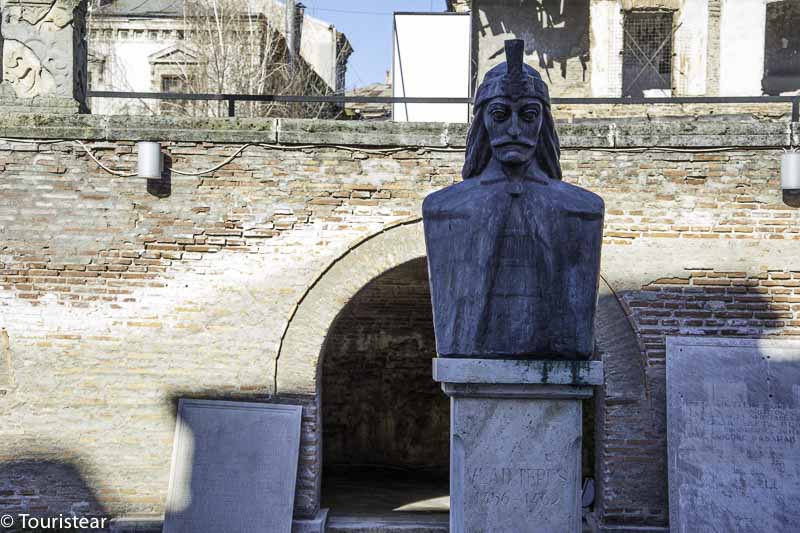
It was the first palace in Bucharest and was built by Mircea the Elder between 1886 and 1418 and was actually a fortress. It was located there due to its strategic location on the banks of the Dambovita.
Here are the ruins of what remains of them. In front of the palace ruins is a statue of Vlad Tepes; we also learned that there are no pictures of Vlad Tepes except one in the Ambras Castle or Schloss Ambras in Innsbruck, Germany.
Hostal Manuc. Hanul lui Manuc
It is on the Strada Franceză itself a little further on and was built between 1804 and 1808 by a wealthy Armenian merchant.
It has kept its identity, and when you visit it, you get the feeling of going 200 years back in time.
It still conserves the wooden paving stones at the entrance instead of the stone used then.
It is well known in the city since 1812; it was here that the negotiations for the end of the Russo-Turkish war took place. Today it is a hotel and restaurant.
Old Town
Retracing our steps, we arrive at Selari Street, which forms a kind of “vee” with Smardan Street.
This is the old town of Bucharest and is also the area for partying and drinking. You can take a leisurely walk during the day.
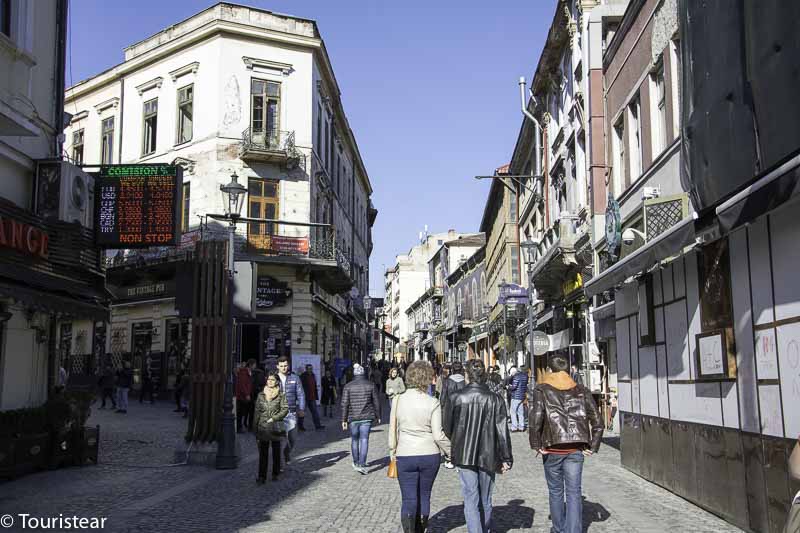
The Historical Center of Bucharest is one of Bucharest’s most loved and attractive areas, a place full of buildings built in neoclassical and neo-baroque styles.
Many of these buildings have terraces, cafes, restaurants, and shops on the ground floor, full of foreign tourists and locals most of the year.
During the night, the locals turn on their lights and the area fills with people. One of the essential places you have to visit in Bucharest.
CEC Palace. National Savings Bank
At the end of Stavropoleos Street is the CEC Palace, which today is the headquarters of the National Savings Bank.
It is a beautiful building although you cannot enter it. It is no longer open to the public, although it is rented for special occasions.
Caru Cu Bere
Caru Cu Bere is undoubtedly the best-known restaurant in Bucharest and is also a monument.
It was for many years the meeting place for intellectuals and thinkers. Its decoration style is very particular and gives you the feeling that you are in a monastery or something like that.
This is the place to dine if you only stay one night in Bucharest. Then you can go for a drink in Smardan Street or Selari Street.
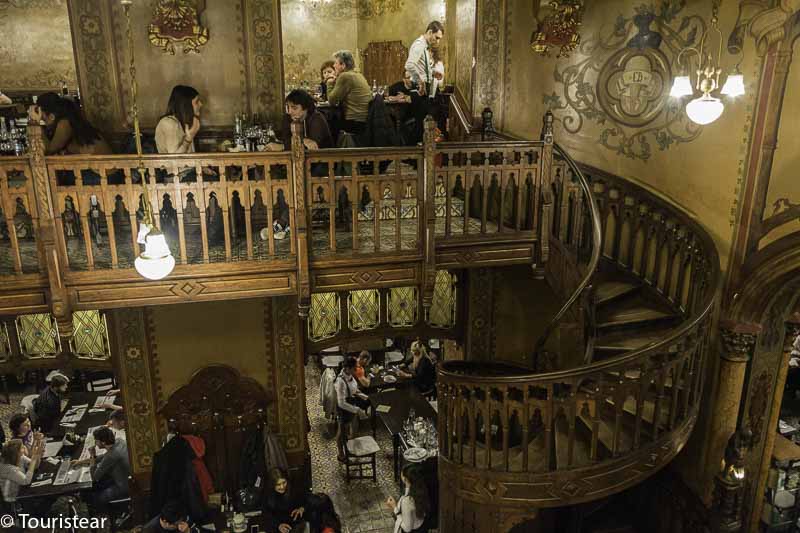
Parcul Herăstrău
It is the largest park in Bucharest, and it is the largest brewery in Bucharest.
The park has about 110 hectares and was built in 1936. It has piers to take a walk along the river that looks more like a lake, really.
You can also have a drink in the coffee shops like the Hard Rock Café or the H. Beraria, which must be 10,000 square meters and have a brewery.
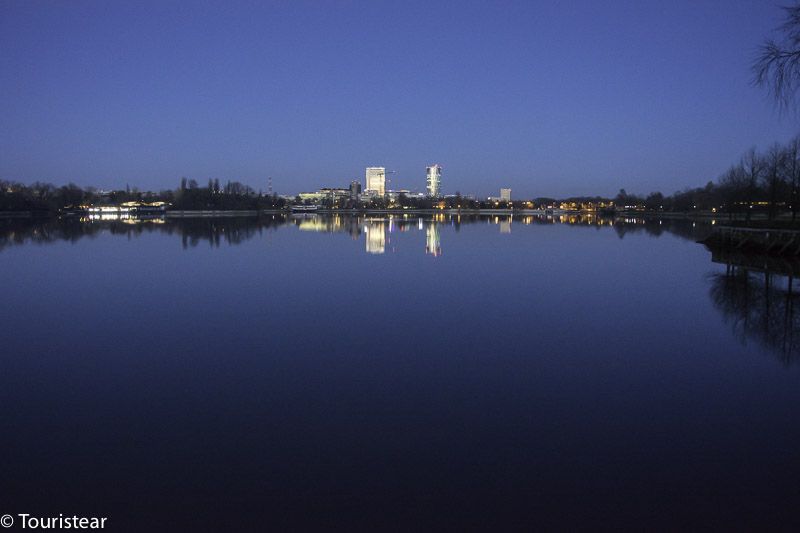
And of course, visit the Satului Museum, the National Museum of the People of Bucharest. An open-air museum in the heart of the Romanian capital.
I’ll tell you below.
Village Museum of Bucharest
The Peasant Museum is an open-air museum in Herăstrău Park; it’s huge, like the park.
The representative houses of the different styles and places of Romania have been transported to it, from the typical house of a Transylvanian city to houses of the Maramures region of Wallachia.
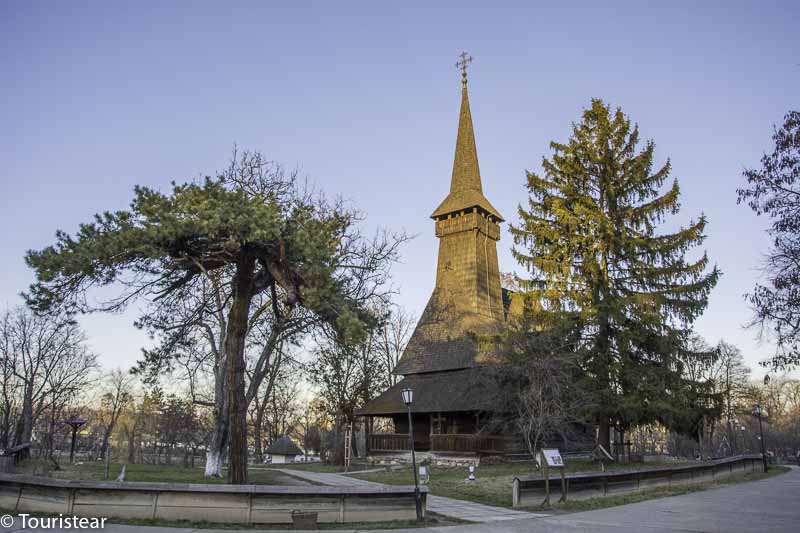
It was created in 1936 by the Romanian Sociological School. It covers 15 hectares and has more than 300 houses. It is the largest open-air museum in Europe.
The permanent exhibition covers an area of 14 hectares with 360 monuments, 60,000 objects in its collections, and more than 250,000 documents on the people and their traditional life in the Archive.
The indoor and outdoor exhibits attract more than 500,000 visitors a year. The People’s Museum is Romania’s most visited cultural destination, open all week.
I hope this article will help you on your next visit to Bucharest.
Other interesting museums to visit in Bucharest are:
- National Art Museum of Romania
- Ethnographic Museum
Arcul de Triumf, Arch of Triumph in Bucharest
Although less famous than the Arc de Triomphe in Paris, Bucharest has its own, although the one we see today is the third.
Bucharest’s triumphal arch was originally built from wood shortly after Romania gained its independence in 1878.
The first arch of the city was quickly built so that the victorious troops could pass under it.
However, since it was built of wood, it did not last long. In 1922, a second arch was built on the site of the first after the First World War.
This arch was also demolished in 1935 to make way for a larger and more permanent Arcul de Triumf and is the monument you see today.
Designed by Petre Antonescu (famous for implementing much of the neo-Romanian architecture throughout the city), the triumphal arch that stands today was inaugurated in 1936.
Antonescu also designed the Bucharest City Hall, the Casa Oprea Soare, the Palace of the Faculty of Law, and the House of Student Culture, among other important buildings in Bucharest.
Orthodox Churches
Romania is a very religious country. Christianity is the most professed in the country.
About 81.9% of the population identify as Romanian Orthodox Christians, 6.4% as Protestant Christians, and 4.3% as Roman Catholics.
2011 census data.
Bucharest Orthodox Cathedral
We go down Union Boulevard (the one seen from the balcony in the photo), and we arrive at a gigantic roundabout, Union Square.
From this square, Aleea Dealul Metropoliei Street rises up one of the few small hills in Bucharest. At the top of this hill are the Romanian Orthodox Cathedral and the Palace of the Patriarchate.
Each country has its patriarch, the highest ecclesial authority in the Orthodox Church.
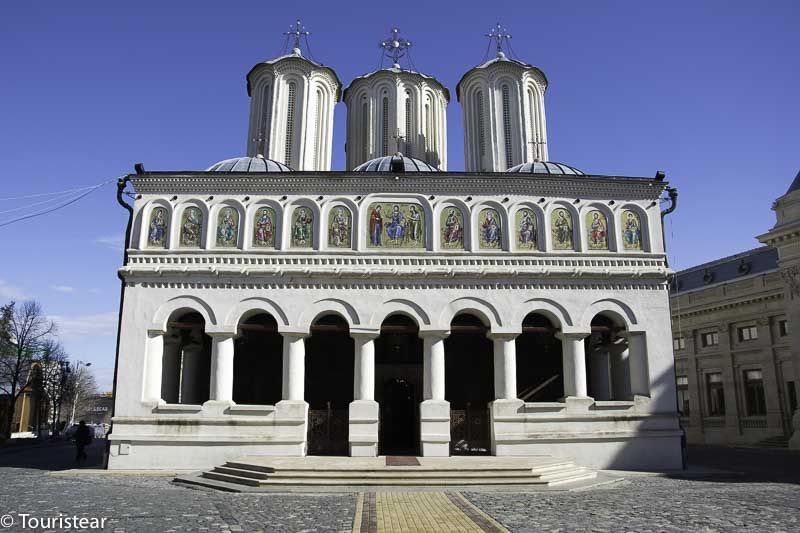
In Romania, he lives in Bucharest, in the patriarchal palace and the cathedral in this place is the most important Orthodox church in Romania.
You must be very respectful when you enter because people usually pray.
If you want to take photos, ask permission first, they always let us, and they didn’t fault us.
Kretzulescu Church
It is in the square of the revolution itself. It catches my eye like all Orthodox churches, and I find it very pretty. It is built in red brick.
This church was built between 1720 and 1722 in red brick. It witnessed the most important history of Bucharest during the last 300 years.
In 1940, it suffered severe damage in the Bucharest earthquake. They were about to demolish it, but luckily, they decided to renovate it, and today we can see this church with its charm of yesteryear.
It is located at Avenida de la Victoria 45.
Church of St Antony
Right in front of the hostel is the Orthodox Church of St Antony, which was part of the Old Court or Curtea Veche. Mircea Ciobanul built it in 1559, the same architect who redesigned the Curtea Veche Palace for Vlad Tepes.
This church has the distinction of being the oldest religious building that remains with its original appearance unchanged.
Stavropoleos Church
It’s on Stavropoleos Street. According to the inhabitants of Bucharest themselves, it is the most beautiful church in Bucharest.
It is small, but the truth is that as you get closer, you see that the exterior is stunning and the church is very well decorated. It was part of a monastery that no longer exists, and a bookstore and a conference room remain.
There are more than 8000 copies in the bookstore, all of their antiques.
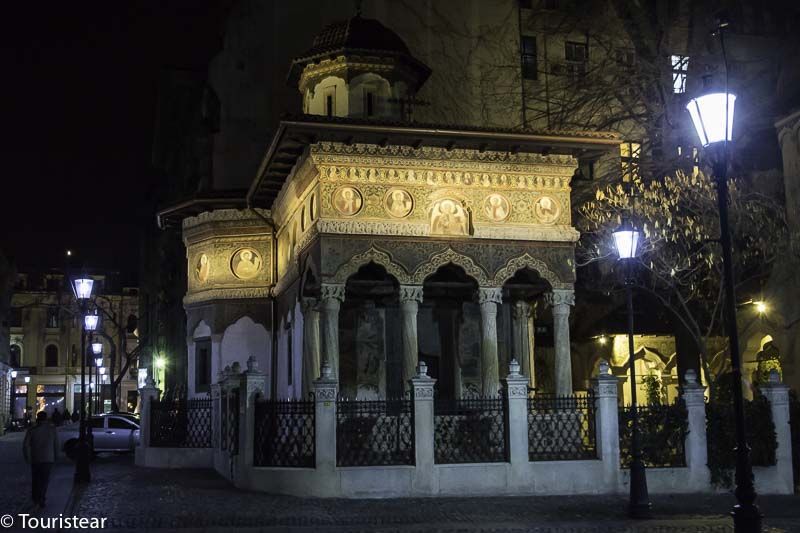
Another thing we learned is that in Orthodox churches, you will see paintings but never sculptures.
Stavropoleos street ends at victoria avenue, which is where we are going; you will leave the Caru Cu Bere on your right, then we will return. In front, you have the CEC Palace.
Travel Insurance
Do not forget to take out travel insurance if you are going to travel to Romania. Hopefully, you don’t need to use it, but it is better to be prepared for any eventuality or emergency.
In my case, I have Mondo’s annual insurance, with worldwide medical assistance with a coverage of $ 10,000,000. Also, you can use our link to get a 5% discount on Hey Mondo Insurance.
Choosing travel insurance will depend mainly on the duration and coverage of the insurance. It is best to inform yourself well to choose the best insurance available.
If you want, you can review our guide on choosing travel insurance, where you will find comparisons, opinions, and discounts.
How to Get from Bucharest Airport to the Center
There are 3 ways to get from the airport to the center of Bucharest:
- By car (faster + convenient)
- Public bus (cheaper but slower)
- Train to North Railway Station (slower)
- Taxi, Uber, or Transfer from Bucharest Airport
Getting a taxi or Uber from Bucharest airport to the city center is easy, fast, comfortable, and reasonably priced (50 – 80 lei or 10 – 17 euros).
You can also hire a private transfer to take you from the airport to your hotel. A 3-seater vehicle can cost you around €29. It is the perfect solution when traveling accompanied.
Public Transport
Line 783 Express connects Bucharest Henri Coandă International Airport with the city center. This line works day and night. At night, the bus leaves every 40 minutes.
Stops at the airport: In front of the Arrivals Terminal and Departures Terminal
It leaves from Piata Unirii. The price for a 90-minute metropolitan trip is 3 lei. *This price may change over time.
Line 780 also takes you to the airport and leaves from the north station.
If you want to contact Dana, the guide who attended us, you can do so on her mobile phone: +40 722 892 869 or her email at [email protected]
Have you been to Bucharest? Let us know your favorite places and recommendations.
Plan Your Trip to Romania
- Read: Route through the castles of Bran and Dracula
- Airport transfers to Bucharest and vice versa
- What to do in Brasov
- Major Cities in Transylvania
- Best Things to do in Timisoara
- Travel Insurance with 7% OFF
Save this image on your Pinterest

Last Updated on 19 September, 2023 by Veronica
Disclosure: Some of the links on this post are affiliate links, meaning at no additional cost to you, I may earn a small commission if you click through and make a purchase.
